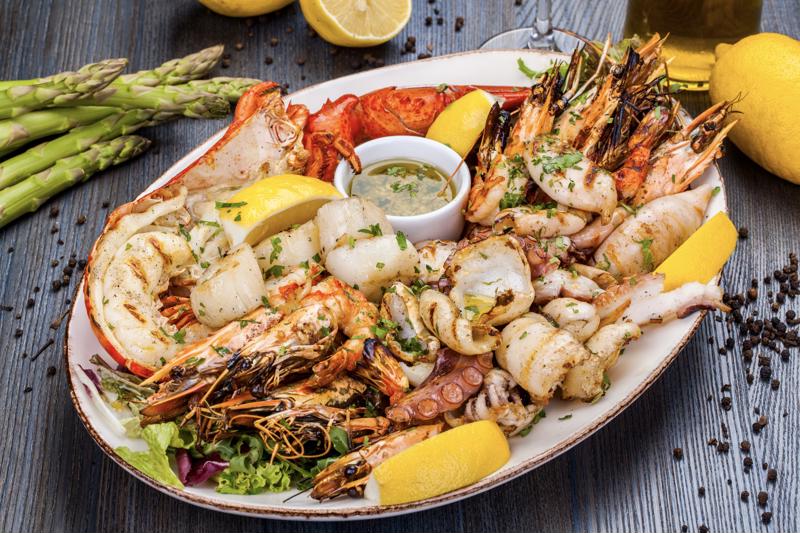When harvested fresh, transported carefully and prepared properly, seafood can be a delight in a variety of culinary settings. Whether it’s a tower of assorted bivalves served at a raw bar, fried whole bellied clams at a seafood shack or the innumerable preparations of shrimp available as appetizers and entrees across many types of restaurants, there’s plenty to like about seafood.
Not every region is suited to producing all types of seafood, however, and not all types of restaurants or styles of cuisine are the appropriate venue to serve such a broad menu of these crustaceans and other creatures. Students in the culinary arts program at our Austin campus should consider how their location, the type of service offered in their restaurants and other variables can affect their plans for serving seafood and offering an excellent experience for their customers.
 Seafood can capture the attention and appetite of your customers.
Seafood can capture the attention and appetite of your customers.Seafood’s surprising reach
With Austin hours away from the nearest access to the Gulf of Mexico, restaurants like Quality Seafood Market are an important reminder of the wide reach and broad appetite for seafood among today’s diners. Without much of a widespread tradition of harvesting or serving seafood but with plenty of desire for such foods, Quality Seafood has established itself as an Austin favorite, Zagat pointed out. It provides both raw seafood through its market space and a variety of prepared meals and sides in its restaurant. With options ranging from New England clam chowder to blackened catfish po-boys, oysters and gulf shrimp, the restaurant has something to offer nearly every seafood lover.
Not all restaurants have such an exclusive focus on seafood, however, nor the capacity to purchase large amounts of varied shellfish in a cost-effective fashion or store it safely. Restaurant supply distributor Gordon Food Service detailed several of the important safety considerations that come along with shellfish, including storage, temperature control and cleanliness. If you want to include seafood on your menu and your restaurant isn’t a stone’s throw from the ocean or a specialty business, you should consider targeting a few dishes that you know your kitchen can correctly and consistently prepare – both in terms of safety and quality. One of your first steps should be to research seafood farming businesses in your area and discuss shellfish availability with current suppliers to your restaurant that you trust.
Seafood dishes with wide appeal and simple sourcing
Shrimp are among the most commonly seen seafood because of their ability to be grown and harvested in fresh water as well as salt water. It’s easy enough for chefs in restaurants hundreds or even thousands of miles away from the closest ocean to source them and put them on the menu. While the prep process can be labor intensive, the attraction of a dish that isn’t always easily prepared at home and the novelty of seafood in many locations can make them popular in many restaurant settings. Consider this simple shrimp ceviche recipe and this preparation for shrimp bisque.
Lobster, once seen as a food for institutional service or for children because of its plentiful availability and low cost in areas where it was available, is now universally recognized as a luxury meal. While they generally have to come from the coast and carry a price tag to match, their appeal makes many customers willing to pay premium prices. A whole lobster can be a unique sensory experience, with cracking claws and dipping hunks of the meat in butter, but there are other preparations to consider. Lobster rolls and lobster mac and cheese are alternatives that can utilize smaller, but no less delicious, portions, helping to address cost issues.
Understanding how to efficiently and safely source, store, prepare and serve meals with expensive, desirable ingredients is an important skill for all chefs. Check out our Austin culinary arts program to start on your path to becoming a professional.


